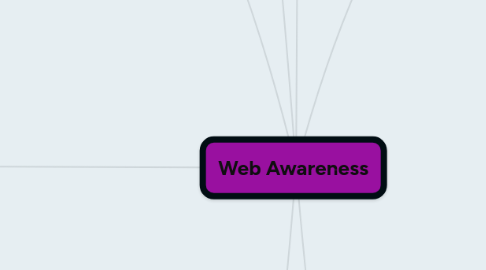
1. Marketing to Kids
1.1. Kids as Consumers
1.1.1. Autonomy
1.1.2. Decision Making
1.1.3. Parental Influence
1.1.3.1. Pester Product
1.1.3.1.1. Persistence
1.1.3.1.2. Importance
1.1.4. Routine
1.1.4.1. LIFE
1.2. Use of Researchers and Psychologists
1.3. The Internet
1.3.1. Buzz Marketing
1.3.2. Social Networking Platforms = Advertisers
1.3.2.1. YouTube
1.3.2.2. FaceBook
1.3.2.3. Hotmail
1.3.2.4. Twitter
1.3.3. Unregulated
1.3.3.1. Unsupervised
1.4. http://mediasmarts.ca/marketing-consumerism/how-marketers-target-kids
2. As A Teacher
2.1. "In Loco Parentis"
2.1.1. Guardian
2.1.1.1. Possibilities
2.1.1.1.1. Such As:
2.1.1.2. Threat
2.1.1.2.1. Avoidance of Harmful Resources
2.1.1.2.2. Too Personal
2.1.1.2.3. Fact or Fiction?
2.1.1.2.4. Such As:
2.2. Educator
2.2.1. Authenticity
2.2.2. Supervision
2.2.3. Dialogue
2.2.4. Conversations
2.2.5. Safety
2.2.6. Evaluation
2.2.7. Protection
2.2.7.1. Intellectual Property
2.2.7.1.1. Copyright
2.2.8. Model
3. Web Resources
3.1. Authenticity
3.1.1. Bias
3.1.2. Perspective
3.2. Evaluation
3.2.1. Where?
3.2.2. Who?
3.2.2.1. Intellectual Property
3.2.2.1.1. Copyright
3.2.3. Reliable?
3.2.4. Biases?
3.2.5. Why?
3.3. Criteria
3.3.1. Age Appropriate?
3.3.2. Building Lessons
3.3.2.1. Training
3.3.2.2. Proper Use
3.3.2.3. Navigation
3.4. Engagement
3.4.1. Parents
3.4.2. Students
3.4.3. Teachers
3.4.4. Administration
3.4.5. Community
3.5. For Example:
3.5.1. Fact or Folly
4. NOTE: Anything in RED is a major concern of mine as a future teacher concerning the use of technology in the classroom. Anything not in RED is either a minor issue, or a way to combat or educate the major issues that are outlined in RED.
5. Digital Citizenship
5.1. Balance
5.1.1. Home
5.1.2. School
5.1.3. Work
5.1.4. Devices
5.1.5. How much is too much?
5.1.6. "When?"
5.1.6.1. "Where?"
5.1.6.1.1. "Why?"
5.2. Ethics
5.2.1. Identity
5.2.2. Privacy
5.2.3. Ownership
5.2.4. Trustworthiness
5.2.5. Participation
5.3. Presence
5.3.1. Google yourself
5.3.2. Use: pipl.com or peekyou.com
5.4. Rules
5.4.1. 1) Respect yourself
5.4.2. 2) Respect intellectual property
5.4.3. 3) Respect others
5.5. Safety
5.5.1. Privacy
5.5.1.1. 50% DON'T KNOW HOW
5.6. http://www.2learn.ca/ydp/DigMedLit.aspx
6. Nine Themes
6.1. Digital Access
6.1.1. Equal Rights
6.1.2. Expand NOT Limit
6.1.3. Committment
6.2. Digital Commerce
6.2.1. Availability
6.2.2. Tech. is commonplace
6.2.3. Effective Consumers
6.2.4. Economy
6.3. Digital Communication
6.3.1. Unlimited
6.3.2. Variety of choice
6.3.3. Constant
6.3.4. Appropriate decisions?
6.4. Digital Literacy
6.4.1. Teaching and Learning
6.4.2. What?
6.4.3. How?
6.4.4. Immediacy
6.4.5. Emergence
6.4.6. Skills
6.5. Digital Etiquette
6.5.1. What is appropriate? Inappropriate?
6.5.2. Rules and Regulations Needed
6.5.3. Must Teach Etiquette
6.5.4. Responsibility
6.6. Digital Law
6.6.1. Ethics
6.6.1.1. Theft/Crime
6.6.1.2. Hacking
6.6.1.3. Plagiarism
6.6.1.4. Viruses
6.6.1.5. Trojan Horses
6.6.1.6. Spam
6.7. Rights & Responsibilities
6.7.1. Privacy
6.7.2. Free Speech
6.7.3. Appropriate Use
6.7.4. Intellectual Property
6.7.4.1. Copyright
6.7.4.1.1. Moral Obligation
6.8. Health & Wellness
6.8.1. Physical
6.8.1.1. Eye safetly
6.8.1.2. Repetitive Stress Syndrome
6.8.2. Psychological
6.8.2.1. Addiction
6.8.2.2. Cyberbullying
6.8.3. Need Education and Training
6.9. Digital Security
6.9.1. Self-Protection
6.9.2. Virus Protection
6.9.3. Data Backups
6.9.4. Surge Control
6.9.5. Locks and Passwords
